The Story of Culture and Arts
- Image resource of Korean history
- Documents from History TextBooks
- Culture & Art Stories from Korean History
- Culture & Art Stories from Korean History - Korean
- National Institute of Korean History
- History net
- About the site
- Introduce
-
Numerous topics related to Korean culture and art are mentioned in middle and high school national history textbooks, but most of them are briefly described by era, making it difficult to understand their concepts, transition processes, and characteristics.
<Culture & Art Stories from Korean History> produces and provides video materials based on expert commentary on the flow, change process, characteristics and characteristics of each major topic in the field of culture and art in Korean history.

Scenario
These days, you can see many people wearing Hanbok, not only at the palaces but also on the streets. Hanbok has lately become a fashion trend, while also helping people create happy memories.
How did people dress during the Joseon ?
Kings and Queens set the fashion trends at the time!
So what types of clothes were worn in the Joseon Dynasty?
Dress of the Joseon Royal Family
The Joseon Dynasty, whose social structure was based on Neo-Confucianism, had strict protocols regarding the attire for various ceremonies, events, places, and social classes.
While in engaged in official matters, the kings of the Joseon Dynasty usually wore the winged cap, royal robe, jade belt, and black shoes.
The winged cap was named so because its two extensions looked similar to cicada wings.
The gollyongpo royal robe was also called the yongpo, the dragon robe.
Kings wore red silk robes while emperors wore yellow robes.
The royal insignia, featuring embroidered dragons, were attached to the robe’s shoulders, the chest, and back.
Dragon patterns were used exclusively by the royal family.
The King wore five-taloned dragon insignia while the Crown Prince wore four-taloned dragon insignia.
“I thought Kings in the Joseon Dynasty wore red robes, so why did King Taejo Yi Seong-gye wear a blue robe?“
“During the reign of King Taejo, the colors of the royal robes were not clearly defined, so I think we can assume that they chose the color blue because they believed that among the 5 colors (white, black, blue, yellow, and red), it best represented the East.” Lee Eun-ju / Professor, Dept. of Content Convergence, Andong National Univ.
Whenever an important royal event, such as a wedding, coronation, or ancestral rite, was held, the King donned the myeonbok robe, with its insignia representing requisite kingly virtues, along with the myeollyugwan crown.
The king had 9 strings of beads and the crown prince had 8 on their crowns. Beads called ‘chungi’ were placed next to the wearer’s ears to remind them to be discreet when heeding other peoples’ words.
The ladies of the court usually wore a semi-ceremonial outfit consisting of a skirt, a top jacket and over it all a dangui robe.
On important occasions, the ladies wore jeokui robes.
Only the dowager queens, queens, crown princesses and the wife of the eldest grand princes of the kings were allowed to wear jeokui robes.
Different colors were used to differentiate the social ranks.
Royal concubines, who could not wear jeokui robes, wore red jangsam and wonsam robes instead. These were valuable ceremonial clothes which commoners could only wear for their wedding ceremonies.
Trends became more luxurious after King Sukjong’s death, and the attire of men and women became more extravagant.
Gache hairpieces were used to emphasize the ladies’ social authority and beauty.
They became increasingly extravagant and grew in size so that in one instance a lady's neck was injured to the point of death.
When the government finally banned gache hair pieces, people began to wear jokduri coronets, and later on hairstyles evolved into hair buns using binyeo hairpins.
The clothes for the royal family were always made in the latest styles from overseas using the best technologies and materials. They constituted the epitome of fashion of the period.
Museums are a wonderful way for people to time travel!
Here we can view special artifacts.
“It says this mummy is that of a 6-year-old boy from the Joseon Dynasty.”
The clothes found along with the mummy are an important source of reference in understanding the dress culture of the period.
Various garments for men and women of the Joseon period were discovered.
They also found padded clothing for women.
These are valuable artifacts through which we can study period quilting techniques. When did the people of Korea begin to wear padded clothes?
Cotton, a Great Revolution in the History of Clothing in Korea
From a needle fashioned of bone and threaded with hemp found from a Neolithic Era historical site, we can see that people made and wore clothes even at that time.
In the Three Kingdoms Period, people made clothes made of silkworms or hemp. These clothes were decorated with beads, gold, and silver.
The basic outfit of jeogori jacket, pants, skirt, and po long coat in Korea first appeared in the Three Kingdoms Period.
The Goguryeo, Baekje and Silla kingdoms influenced one another and showed similar styles of fashion but with slight, unique variations.
The Unified Silla kingdom had an active relationship with the Tang Empire in China, and consequently, it was heavily influenced by Tang in terms of fashion.
Due to the political influences of neighboring countries, including China, many changes occurred in the clothing worn by the royal family and noblemen.
“Yuan Dynasty China was a major influence. When King Chungnyeol returned from the Yuan Dynasty as a crown prince, he arrived wearing a Mongolian style costume. There is an entry in the Goryosa(History of the Goryeo Dynasty) mentioning how people were surprised to see him like that. After he ascended the throne, he ordered his officials to dress in Mongolian style. This fashion trend continued for over 80 years.” Lee Eun-ju / Professor, Dept. of Content Convergence, Andong National Univ.
Thanks to such changes, a double clothing system, in which people wore Chinese-style clothes for official purposes while wearing traditional clothes at other times, appeared.
Although noblemen were rich enough to wear silk underwear, commoners only had clothes of thin hemp fabric, even in the winter.
Mun Ik-jeom (1329–1398)
Civil official of the late Goryeo Dynasty who procured cottonseed from China
He worked hard to grow cotton and produce cotton cloth
However, a huge change occurred in Korea’s clothing culture when Mun Ik-jeom, a civil official in the Goryeo Dynasty, brought over cottonseed from China.
Mun Ik-jeom also studied ways to cultivate cotton and cotton fabric production technology so that commoners could wear warm clothes.
Thanks to his efforts, cotton fabric spread throughout the country during the Joseon period, and it became possible for commoners to wear warm clothes and use cotton blankets in winter. Various fashion styles developed thanks to the spread of cotton fabric.
People began to wear both Hanbok and Western-style clothing in the late 19th century during the reign of King Gojong.
After the enlightenment period in the late 19th and early 20th centuries, simple clothes in the Western style spread throughout the country, and women began to lead the fashion culture.
[Epilogue]
Must-Know Facts on Culture and Art in Korean History
1. In the Joseon Dynasty, Kings wore ikseongwan winged caps and gollyongpo royal robes while working
2. Mongolian-style clothes and hairstyles, such as the Chinese queue, became popular in the Goryeo Dynasty, when it was subject to Yuan Dynasty China
3. Thanks to the successful cultivation of cotton by Mun Ik-jeom, it became possible for commoners to enjoy warm clothes
Life & Folklore
17 films-
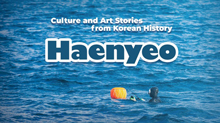 Haenyeo, female divers in Jeju08:52
Haenyeo, female divers in Jeju08:52 -
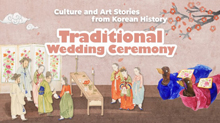 Traditional Wedding Ceremony08:22
Traditional Wedding Ceremony08:22 -
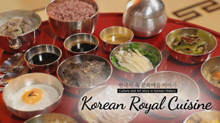 Korean Royal Cuisine08:22
Korean Royal Cuisine08:22 -
 Gat and Traditional Headwear of Korea08:48
Gat and Traditional Headwear of Korea08:48 -
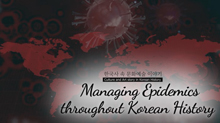 Managing Epidemics throughout Korean History08:48
Managing Epidemics throughout Korean History08:48 -
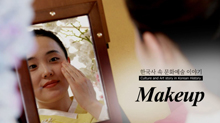 Makeup07:52
Makeup07:52 -
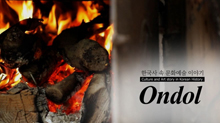 Ondol, Korea's Underfloor Heating System08:40
Ondol, Korea's Underfloor Heating System08:40 -
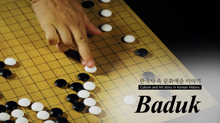 Baduk08:32
Baduk08:32 -
 Four Treasures of the Study09:34
Four Treasures of the Study09:34 -
 Farming Implements09:12
Farming Implements09:12 -
 Coming-of-Age Ceremony08:41
Coming-of-Age Ceremony08:41 -
 Ginseng08:44
Ginseng08:44 -
 Tobacco08:27
Tobacco08:27 -
 Kimchi08:37
Kimchi08:37 -
 Relief Crops08:37
Relief Crops08:37 -
 Korean Currency09:28
Korean Currency09:28 -
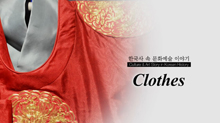 Clothes08:20
Clothes08:20

